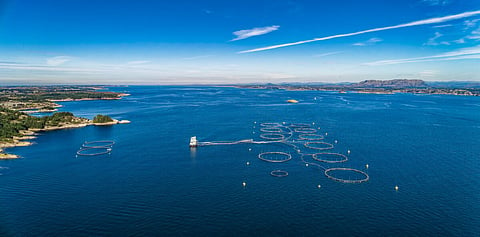

Sjømat Norge (Seafood Norway) started the year by presenting its response to the government's proposal for a ground rent tax on aquaculture. In it, the organization recommends to the Norwegian government that, to collect the same amount of tax as proposed, it should follow the example of the Faroe Islands and investigate their land rent model.
"The government can collect the same amount of tax that the government has proposed through a more suitable and proven tax model. The Faroe Islands tax aquaculture with a production tax that increases gradually with increasing price levels", said the Chairman of Sjømat Norge, Paul Birger Torgnes.
"The Faroese model is tried and tested, and is used both in the Faroe Islands and in Iceland. It can easily be adapted to the government's political wishes regarding tax levels, shielding of smaller companies and ensuring increased tax revenues for both communities and host municipalities", he added.
As it did in its response to Minister Vedum on the possibility of following the standard price council model of the oil tax in the salmon rent tax, Sjømat Norge has again remarked that selling salmon is significantly different from selling oil. According to the organization, the hydropower model the government has used as a basis is not a suitable tax model for the aquaculture industry.
"The proposed model is complicated, bureaucratic and administratively demanding for both society and companies", Torgnes said. According to him, "the tax proposal has a level and a design that could have major and harmful effects on the industry's structure, investments, employment and value creation".

Like other consulting bodies, Torgnes also believes that the government's proposal is not neutral, something he considers a crucial premise for such taxation to work. "It is based on extracting oil, gas or damming a waterfall. Aquaculture is a completely different industry with a complex value chain. It is industrial production of seafood where only part of the production is linked to the use of shared seawater", he claimed.
Just as, one by one, most of the companies that have responded to the Norwegian government's consultation have done – we recently saw the example of Nova Sea – Paul Birger Torgnes also said that ideally the tax should have been introduced in 2024. This way, the final salmon tax could be seen in the context of the tax committee's advice and also the Aquaculture Committee's advice on what the future permit system should look like. The Tax Committee already submitted its NOU, although it was just before Christmas, and the Aquaculture Committee is scheduled to issue its advice before Easter.
"There are important clarifications that will take place during 2023", the Chairman of Sjømat Norge said. However, the new tax has already been introduced as of January 1, 2023, although, as Sjømat Norge's press release recalls, its design is unknown. Since the final proposal will be presented to the Norwegian parliament sometime in the spring, Torgnes has called for a broad agreement to be prepared in the Storting.
"Now the government must go into the consultation responses, take the time to assess them in a proper way, and also give the Storting various alternatives. I take it for granted that they do not set up a skin process where model selection and layout of the tax are all decided. That it is a real hearing has been repeated by the Prime Minister, the Minister of Finance and the Minister of Fisheries and Oceans several times. We must have confidence in that", concluded Sjømat Norge's Chairman.
